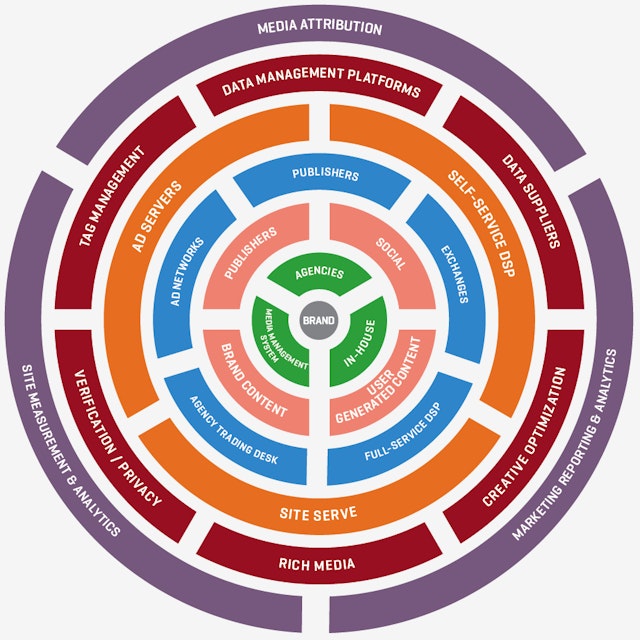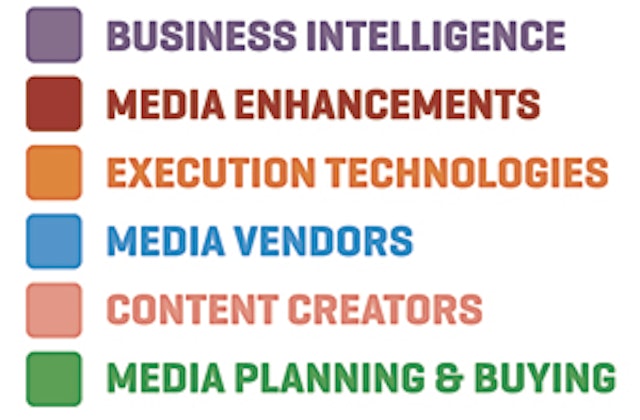As the digital display advertising ecosystem continues to evolve, new methods are being tested to create efficiency in the buying of ad space.
Programmatic buying, characterised by real-time bidding (RTB), provides transparency and efficiency when it comes to the buying of digital advertising space, with a number of benefits for advertisers.
The growth of RTB highlights its efficiency as part of the wider online marketing mix; with 34 per cent of all display advertising revenues projected to come from RTB by 2017, it's essential for advertisers to stay on top of the evolution in digital display advertising.
Despite the opportunities offered by programmatic buying, take-up by advertisers remains a barrier to investment.
The IAB has created an infographic as part of its endeavour to simplify the space, with the aim to educate and ultimately attract further ad spend. Peter Minnium, head of brand initiatives at the IAB, who headed up the project, told The Drum that the digital advertising ecosystem has previously been “opportunistically portrayed in a complex manner” to the benefit of venture capital companies and bankers.
Minnium is making reference to the LUMAscape charts designed by LUMA Partners, which present a rather disorienting view of the space, with its multitude of vendors and specialists vying for attention in the digital ecosystem.
As part of its aim to change perceptions of the space, the IAB “wanted to establish something with a simple but broad view of how the digital advertising ecosystem actually works.”
The result is its Digital Advertising Arena, published here, which places the brand (and its relationship with consumers) at the centre of the process.
Minnium argues it’s the responsibility of those operating in the industry to simplify as well as
demystify the space to increase engagement. “It’s the responsibility of the industry to do two things around reducing complexity. One is to actually simplify the supply chain, which isn’t easy, and the other is to demystify the process; one is actual and the other is perceptual, and we have a responsibility to do both.”In placing the brand and its inferred relationship with the consumer at the centre of the process, the arena goes some way in highlighting the importance of creativity to a campaign's success.“There are two aspects to the success of digital advertising – there's art and there's science,” says Minnium. “This process really focuses on the logical aspect of how to do display effectively, but there is a whole other education process which still needs to happen to remind people that it doesn't matter how many things you buy and deliver unless the message that you have is a good one.”“This chart aims to fix one problem but it's not really addressing that important secondary aspect. Of course standards are critical for scale. Ad standards don't scale, ideas do. Yes, we need standards to be the vessels to deliver those ideas, but one's not going to deliver without the other.” So what's the solution to the problem of the educational issue around the importance of creativity? "I believe it's probably three-fold," says Minnium, suggesting that the first two problems lie in standards and measurement."The industry has a perception problem with banners, because ad banners have not kept up with the market, they're too small, they're not interactive on the page as a whole and click-through is really dead as a means of meaningfully interacting with viewers. So number one we need better standards – that's a factual problem – and the IAB Rising Stars programme in the US and Future Formats in the UK are addressing this."We need better metrics, because the only metrics – shockingly – that we have at scale today are impressions and click-throughs, and clearly creative advertising is not valued by an impression and it shouldn't be measured by a click. It should be measured by the quality of the engagement."Celebrating digital creativity is another problem the industry needs to overcome, according to Minnium. He argues: "The industry needs the first page of the Gunn Report to be digital creativity. We need the Cannes Lions Grand Prix to be digital first."
Look out for The Drum's supplement on the digital media ecosystem, published on 26 April, which takes an in-depth look at the opportunities and challenges around programmatic buying.


